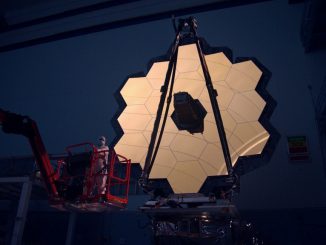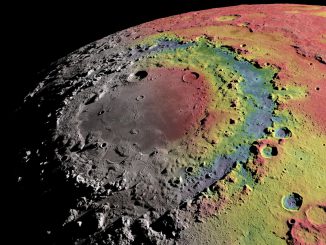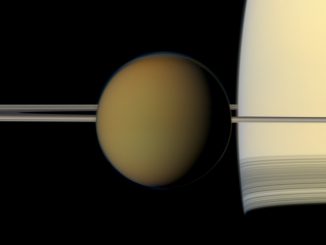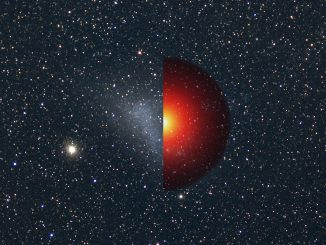
NASA’s Goddard Space Flight Center


Fast radio bursts born in cosmic cataclysms
Fast radio bursts (FRBs) were first discovered in 2007, and in the years since radio astronomers have detected a few dozen of these events. Researchers have found that these mysterious “cosmic whistles” can release a billion times more energy in gamma-rays than they do in radio waves, rivalling supernovae in their explosive power.

Lunar impact: how the Moon’s Mare Orientale was formed
The Moon’s Orientale basin is an archetype of “multi-ring” basins found throughout the solar system. New research has enabled scientists to reconstruct Orientale’s formation using data from NASA’s GRAIL mission. It is now thought that the 580-mile-wide feature was created 3.8 billion years ago by an impacting object some 40 miles across travelling at about 9 miles per second.

Record-breaking extragalactic gamma-ray binary found
Using data from NASA’s Fermi Gamma-ray Space Telescope and other facilities, an international team has found the first gamma-ray binary in another galaxy and the most luminous one ever seen. The dual-star system, dubbed LMC P3, contains a massive star and a crushed stellar core that interact to produce a cyclic flood of gamma rays.

‘Impossible’ cloud found on Saturn’s moon Titan — again
The puzzling appearance of an ice cloud seemingly out of thin air in the stratosphere of Titan has prompted NASA scientists to suggest that a different process than previously thought — possibly similar to one seen over Earth’s poles — could be forming clouds in the giant Saturnian moon’s hazy, brownish-orange atmosphere.

Fermi space telescope expands its search for dark matter
Dark matter, the mysterious substance that constitutes most of the material universe, remains as elusive as ever. Although experiments on the ground and in space have yet to find a trace of dark matter, six or more years of data from NASA’s Fermi Gamma-ray Space Telescope has broadened the mission’s dark matter hunt using some novel approaches.

Hubble makes first atmospheric study of Earth-sized exoplanets
Astronomers using the NASA/ESA Hubble Space Telescope have conducted the first search for atmospheres around temperate, Earth-sized planets beyond our solar system. They found indications that increase the chances of habitability on two exoplanets known as TRAPPIST-1b and TRAPPIST-1c orbiting a red dwarf star approximately 40 light-years away.

NOAA satellite shows Moon crossing face of Earth for second time in a year
On 5 July 2016, the Moon passed between the National Oceanic and Atmospheric Administration’s DSCOVR satellite and Earth. NASA’s EPIC camera aboard DSCOVR snapped these images over a period of about four hours. In this set, the far side of the Moon, which is never seen from Earth, passes by. The last time EPIC captured this event was 16-17 July 2015.

Dawn maps Ceres craters where water ice can accumulate
Scientists with NASA’s Dawn mission have identified permanently shadowed regions on the northern hemisphere of dwarf planet Ceres. Most of these areas likely have been cold enough to trap water ice for a billion years, suggesting that ice deposits could exist there now. These permanently shadowed regions could be colder than those on Mercury or the Moon.

X-ray echoes of a shredded star provide close-up of monster black hole
Some 3.9 billion years ago in the heart of a distant galaxy, the intense tidal pull of a monster black hole shredded a star that passed too close. After X-rays produced in this event first reached Earth on 28 March 2011, scientists concluded that the outburst, now known as Swift J1644+57, also represented the sudden flare-up of a previously inactive black hole.
